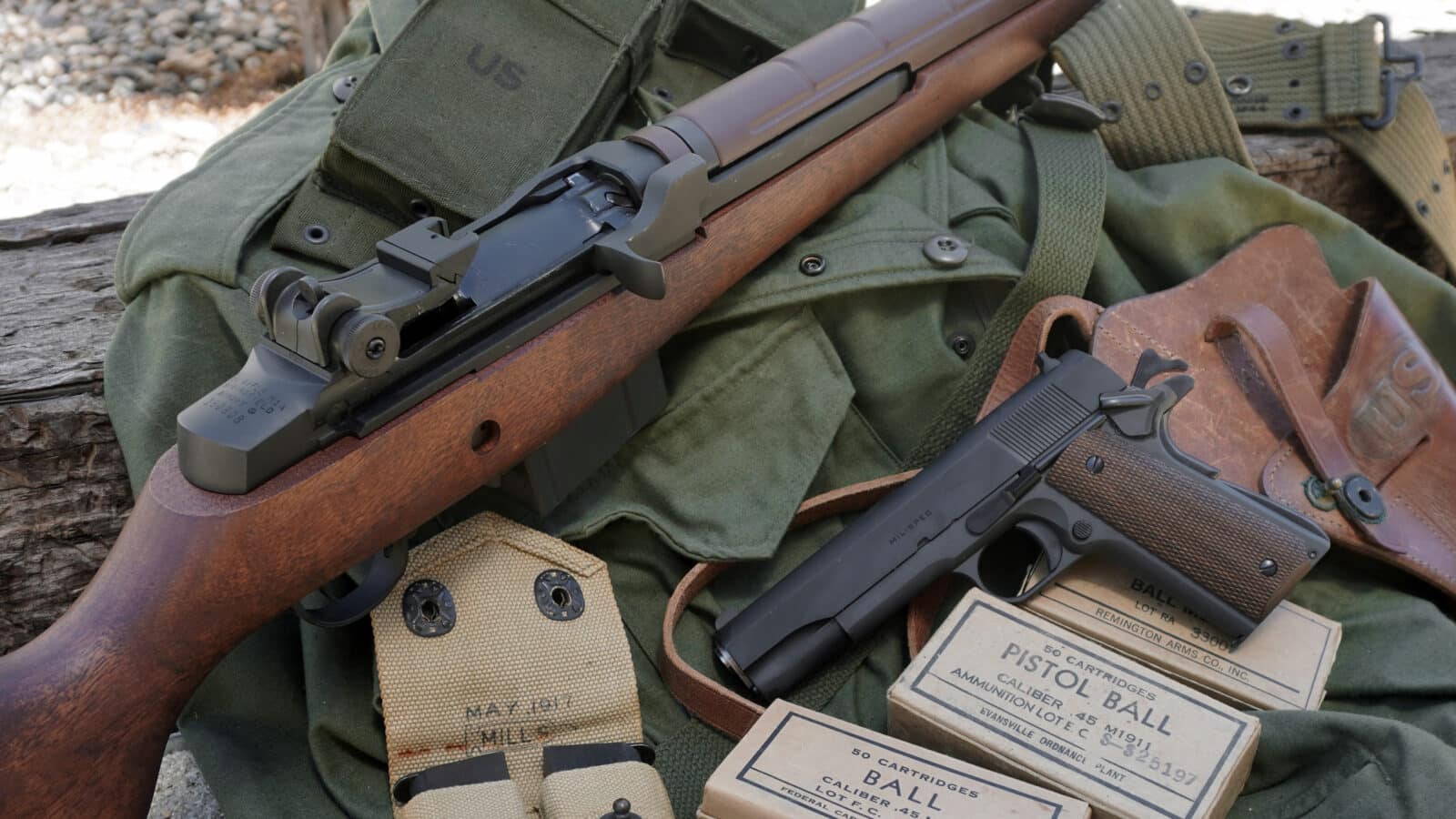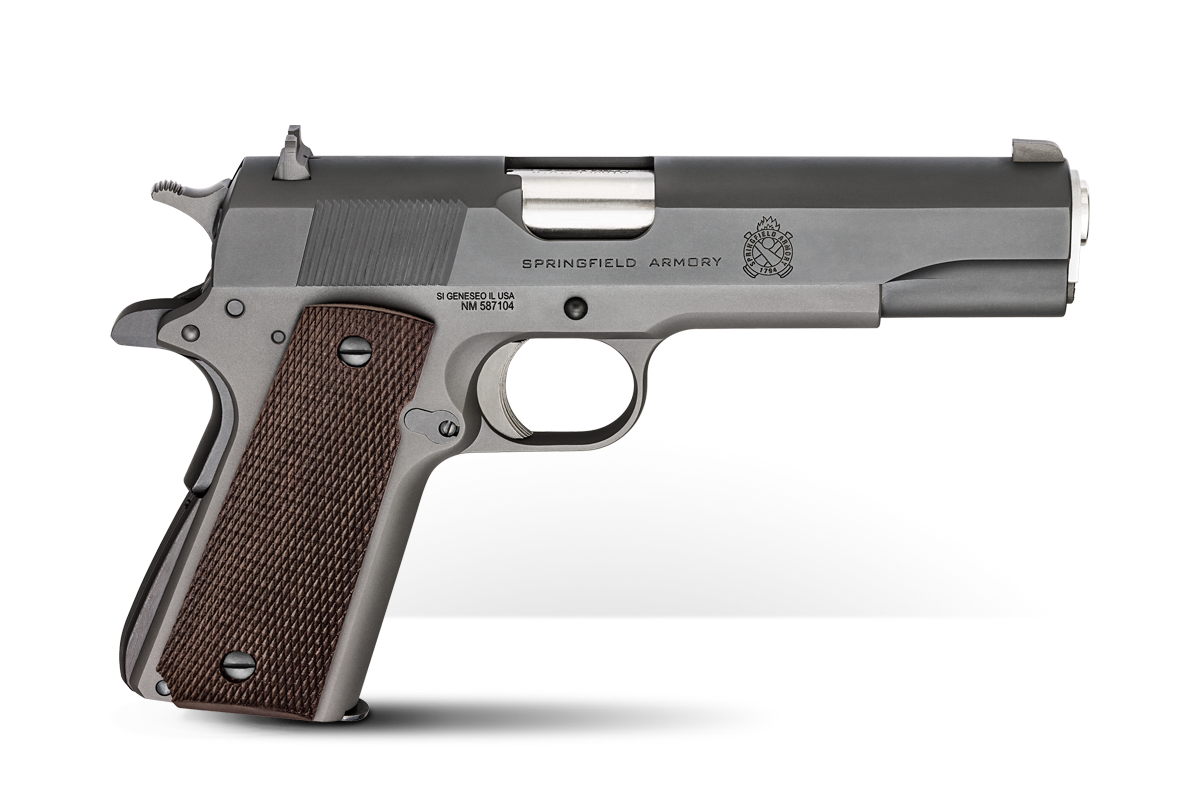Are you a gun owner looking to start collecting firearms inspired by those employed by the U.S. military? Have you been watching movies about WWII or Vietnam and wishing you could get your hands on the guns you see on screen?
If you are like me, this is definitely true. And if you are like me, you probably have started pricing actual G.I. firearms from those eras and find they are not only very scarce, but also cost prohibitive.
Well my friend, Springfield Armory has got you covered! Whether you are looking for the longest-serving U.S. military handgun, or the last of the classic “walnut and steel” service rifles, Springfield Armory produces versions of both. Not only are they readily available, but they are significantly more affordable (or, in the case of the M1A, accessible to own) than their actual military-issued counterparts.
The Ultimate Sidearm
The M1911 handgun was the primary sidearm of the United States military for 74 years, from its adoption in 1911 until 1985. Even after being officially replaced as a primary sidearm, it continued to be used by U.S. special forces for many years.
Springfield Armory offers an extensive line of 1911 handguns, but none of them is more classic than the “Defend Your Legacy Series” Mil-Spec 1911. From the logo-free checkered grip panels to the parkerized finish on the forged steel frame and slide, this one really calls back to the classic design.
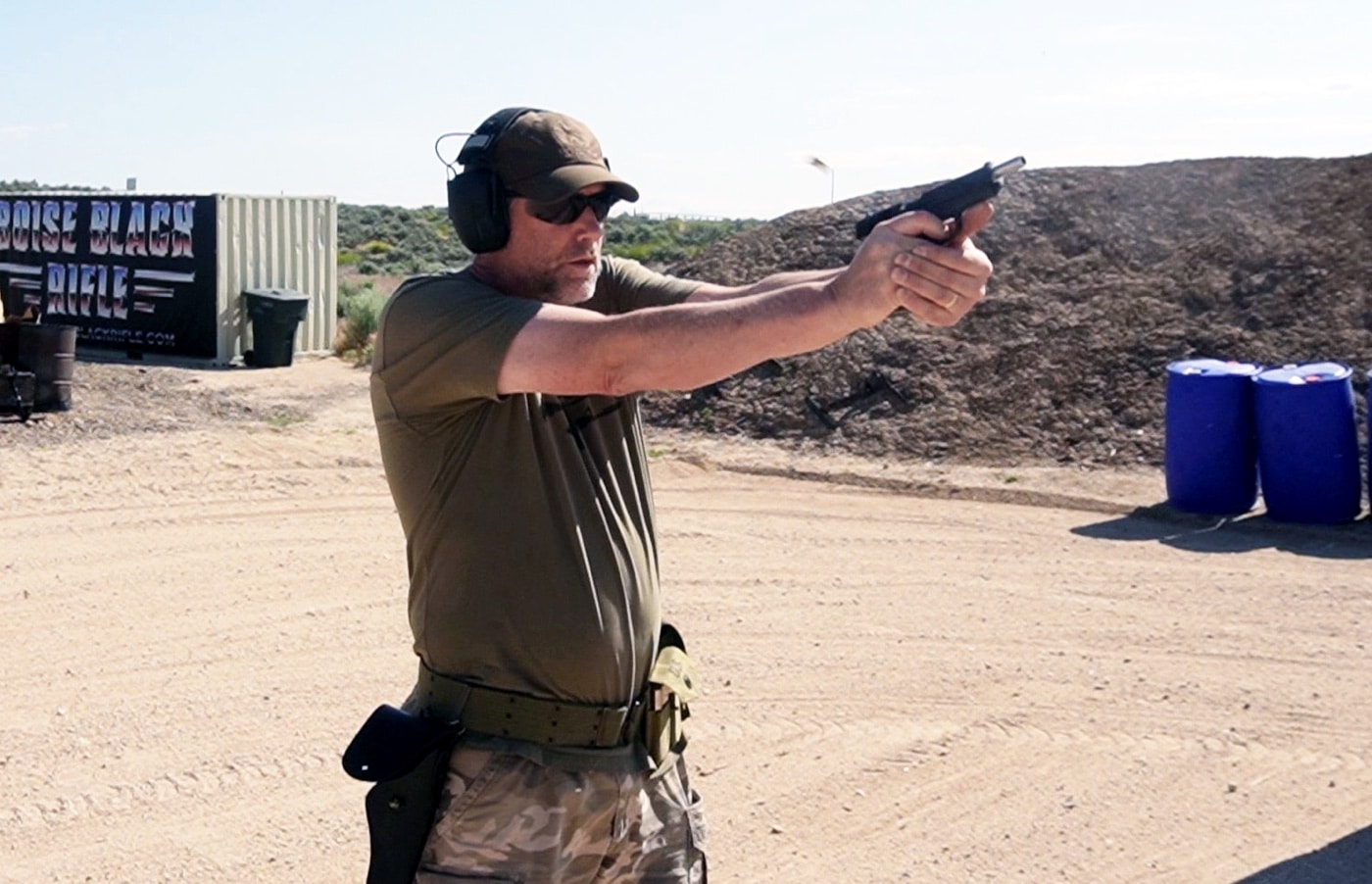
Upon closer inspection, things continue true to form. The Mil-Spec has all the changes that were part of the A1 model, which include the arched mainspring housing, the shorter trigger and the chamfers on both sides of the frame adjacent the trigger.
The Mil-Spec does have a few modern upgrades from G.I. guns. The thumb safety is a standard modern version, not the tiny little nub the G.I. guns had. The slightly taller three-dot iron sights are also a big improvement over the tiny G.I. sights. Perhaps the most visible departure from a G.I. pistol is the stainless barrel and barrel bushing, as well as the lowered and flared ejection port. While visually different from a true military-issue 1911, these changes make for a better shooting and longer-lasting pistol.
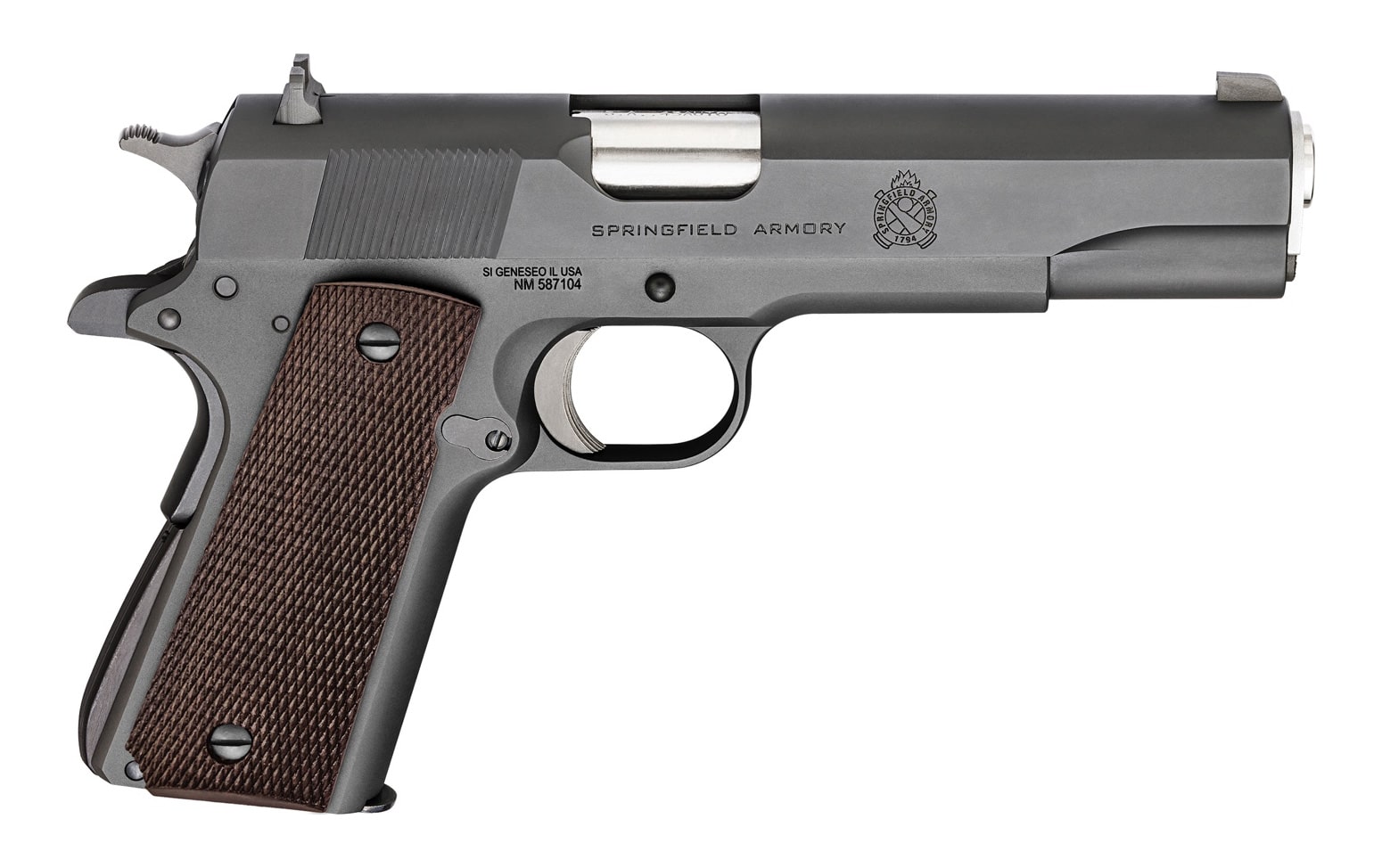
For those seeking to dive deeper into the M1911 collection, original G.I. holsters are rare but can be found. Even year-stamped ammunition in original boxes and original G.I. two-tone magazines can be found if you look hard enough.
While those items make excellent collection materials, I would advise against using them. Ammo from that era is very corrosive, and 80 year old leather holsters can be brittle. If you want to LARP (live action role play) with era correct gear, nearly every G.I. holster, belt and mag pouch ever used by the U.S. military for the M1911 is being reproduced, more readily available, and significantly more affordable. In fact, Springfield offers some impressive reproduction holsters from 1791 Gunleather.
A Classic Lives On
How about the M14, the last of the true “walnut and steel” service rifles? The number of actual U.S. military M14’s in private hands is very, very small. Since the M14 was a select-fire rifle with full-auto capability, they could not be sold to the public when they were taken out of service. Instead, most were dismantled and the receivers were destroyed.

However, civilian demand for the M14 was high and this is where Springfield Armory stepped in. One of the first firearms produced by Geneseo’s Springfield Armory was the M1A, which is a semi-auto only version of the M14. (To learn that whole fascinating story, click here.)
The Standard M1A from Springfield Armory is an accurate reproduction of the standard M14 that was issued by the U.S. military, aside from the selector and the related notch in the stock. Speaking of that stock, the walnut stock of the Standard M1A is gorgeous, and complements the parkerized steel parts beautifully. The M1A has a classic elegance that more modern rifle designs lack.
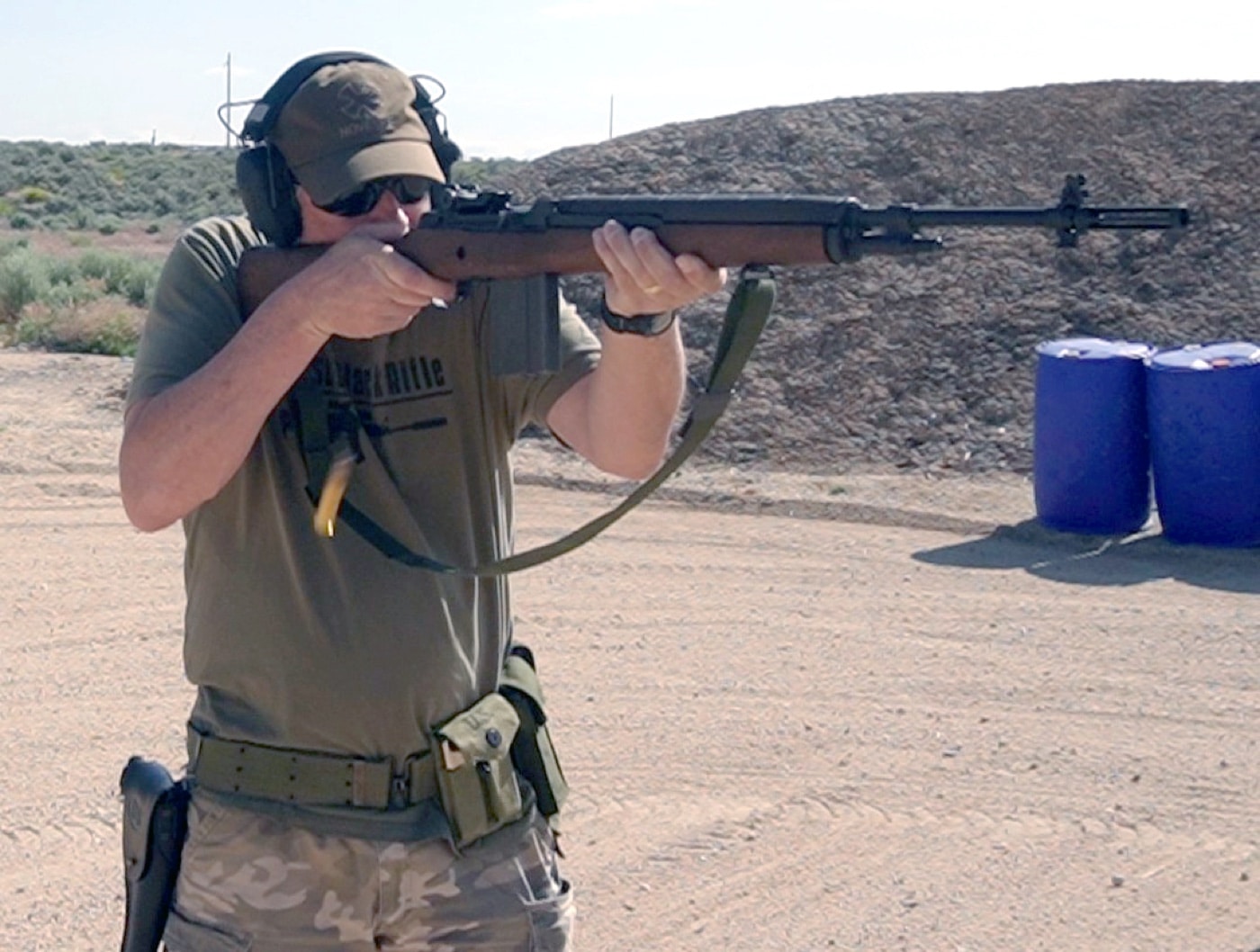
Do not let the classic looks fool you, though. With a skilled trigger-puller operating it, the Springfield Armory M1A is a very capable firearm, and its 7.62×51 cartridge a powerful punch. Speaking of that trigger, it is an excellent two-stage unit. The iron sights are excellent and are adjustable for both elevation and windage. The sight radius is very long, which enhances the rifle’s accuracy.
The wood stock versions of the M1A even include the mythical “shoulder thing that goes up.” The hinged butt plate on the stock was originally intended to help control recoil when firing the M14 in full-auto while prone. While the M1A is semi-auto only, that hinged butt plate does still offer some benefits when shooting prone.
The Standard M1A ships with a 10-round magazine, but G.I.-spec 20-round mags like those the M14 came with are available from Springfield Armory.
Where It Counts
While many folks who buy and collect true military-issue firearms never shoot their guns for fear that they will destroy the collector values, the Springfield Armory “Preserve Your Legacy” Mil-Spec 1911 is begging to be used. With an MSRP of just $725, you will not be concerned about losing thousands of dollars in value if you fire it.
The same goes for the Standard M1A. With an MSRP of $1,875, the Standard M1A comes in about tens of thousands less than an actual U.S. military M14, if you can even find one.
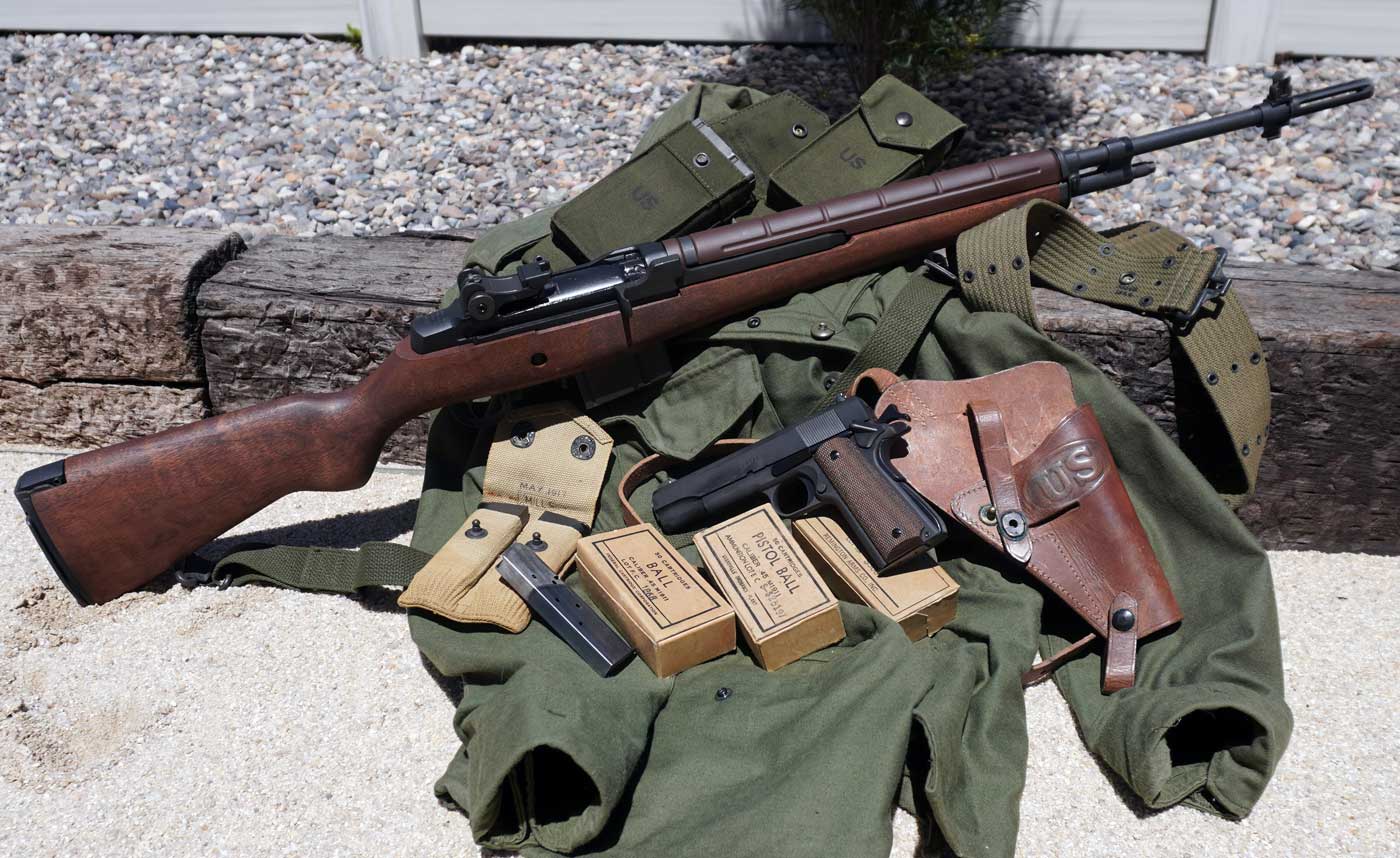
Speaking of firing these guns, how do they shoot? I took the M1A and Mil-Spec to the range along with an actual WWII G.I. 1911 that I own to answer that question. For the range trip, I picked up a reproduction G.I. leather M1913 holster and reproduction M1936 belt. I got into the boxes of actual G.I. collectibles and dug out a real WWI tan canvas G.I. mag pouch and two Vietnam-era M14 mag pouches. I put those on the reproduction belt and hit the range.
While I have owned my M1A for nearly 20 years, I don’t shoot it too often, which in retrospect is a mistake. The semi-auto action does a lot to lighten the recoil of the .308 cartridge. Not that .308 kicks horribly, but the M1A just feels soft compared to other .308 rifles I own. That long sight radius I mentioned earlier even works with my aging eyes, and the factory two-stage trigger is excellent. All of those things combine to make a very enjoyable gun to shoot.
As for the Mil-Spec 1911, it shoots, well, just like an actual military-issue 1911, only better. Feel in the hand has the two guns nearly indistinguishable. The few parts that Springfield included that are not true military spec, namely the barrel, the safety and the sights, all help the Springfield Mil-Spec outshoot my WWII G.I. gun by quite a bit.
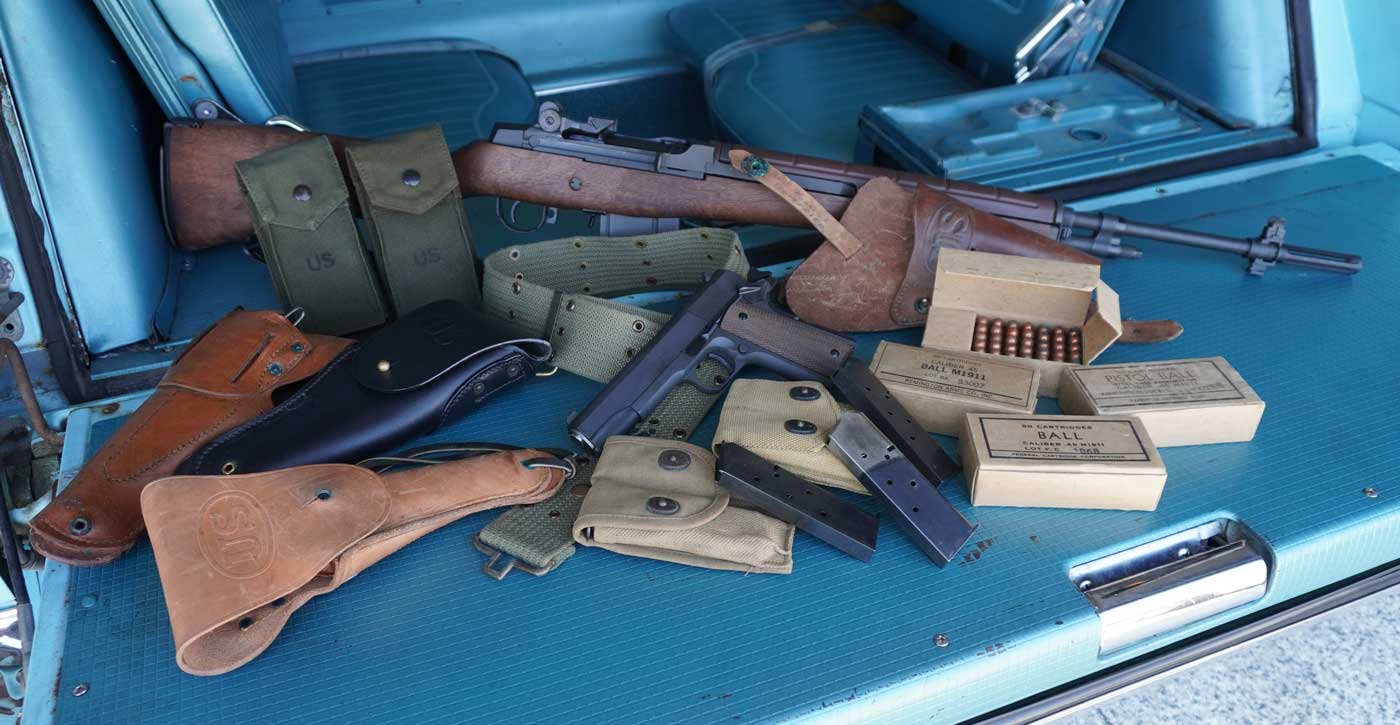
Did I mention my aging eyes? Attempting to use the sights on my WWII gun was an exercise in futility, but the sights on the Mil-Spec were actually usable, albeit a bit blurry.
The included seven-round magazine functioned perfectly with no issues at all. I also brought along several other magazines to run in it, and the gun did not seem to care which magazine fed it.
Either of these guns, or both, would make an excellent start to a U.S. military-style firearms collection. But rather than a collection of safe queens that never get used, you can routinely enjoy shooting both of these guns without damaging collector value — and shooting both of these guns is a quite enjoyable experience.
Editor’s Note: Be sure to check out The Armory Life Forum, where you can comment about our daily articles, as well as just talk guns and gear. Click the “Go To Forum Thread” link below to jump in!
Join the Discussion
Featured in this article
Read the full article here




